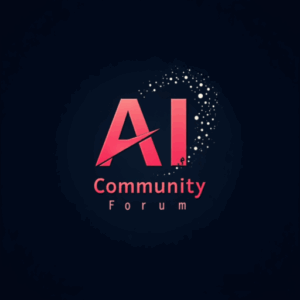The race to redefine enterprise operations with generative AI is well underway. While many companies are experimenting with automation and intelligent tools, Genpact is taking a more structured and ambitious path.
The company’s push into generative AI and automation is now converging into what it calls the agentic enterprise, where AI doesn’t just support the process, it becomes the process.
While speaking at AIM’s DES 2025 event, Aniruddha Ray, senior vice president of agentic products and platform engineering at Genpact, described this as “the most powerful construct in my lifetime”.
He outlined Genpact’s transformation under the ‘Genpact Next Strategy’. This strategy focuses on three pillars—leading with advanced technology, prioritising service lines and unlocking value for customers.
From Agent-Powered to Agentic Enterprises
Ray highlighted the difference between agent-powered enterprises and agentic enterprises.
When it comes to agent-powered enterprises, he explained, AI is embedded within existing processes. In agentic enterprises, however, AI becomes the process. “Today, if I run a process and I embed AI or software in it, what will happen is that the process will be driven by AI, and humans will actually enable part of it,” he said.
In this shift, data is no longer static and siloed. Genpact is moving towards unified, contextual, real-time data, supported by knowledge graphs and semantic ontologies. Complex application interfaces are being replaced with agent-driven interactions.
From human in the loop to human on the loop, the relationship between AI and people is gradually evolving. It suggests that humans are moving from active participants to strategic monitors of AI systems.
“[While] agents are doing a lot of work, humans are monitoring, augmenting and governing,” Ray explained.
However, to fully transition into an agentic state, something was still missing. Genpact had experimented with systems of insights and systems of integration, but neither filled the gap.
Ray said that it turns out the missing link was “systems of innovation”—an orchestrated layer where agents interact among themselves, with systems, and with humans. “That is the agentic layer, and that is the layer of innovation,” he added.
Empowering Knowledge Workers
One of the first steps, according to Ray, has been to “supercharge knowledge workers”. He pointed to tools like Dataverse, which can generate industry-specific models quickly with minimal data, and Cora Code GenY, a software development model to generate code and test cases.
To further push this, Genpact introduced a model called the AI GigaFactory. It allows for large-scale automation against specific use cases, bringing down project timelines significantly. “A transformation that needs to be done in six months…we can try to do it in two to four months,” Ray said.
The third step is delivering these solutions as agentic offerings. Rather than measuring success by the percentage of automation, Genpact focuses on tangible business value, like reducing invoice processing cost by 70% or improving claims handling speed.
Service as Agentic Software
Ray described two major operating shifts within Genpact. The first is the move to service-as-agentic-solutions, what he termed “SaaS 2”—where the service itself is driven by the software.
The second is the AI GigaFactory model, which combines agent-led automation with productised solutions. Ray presented a product for accounts payable as an example.
The architecture connects systems of record, systems of insight, and systems of engagement. At the core lies a layer of specialist and generalist agents working together through orchestration. “This is the agentic AI engine,” he said.
However, success depends on more than just agents. According to Ray, there are three main challenges—data quality, integration, and agent selection. “We are realising we need to create an ensemble of agent…determined by the type of data it’s applying to,” he said. Domain expertise and semantic understanding are critical.
Building Towards Agentic Products
Genpact is applying this thinking across finance and risk, from accounts payable to invoice-to-cash and record-to-report. Some are productised solutions for a handful of customers.
To scale, the company is investing in a robust capability model. This begins with the data engine room, where anonymised or synthetic data is prepared and used to train different types of agents.
A live semantic metadata layer sits above it. The AI agent foundry is where multiple agents are created, each fine-tuned with domain-specific LLMs and SLMs.
“You don’t do anything without working with partners,” Ray said. Whether through partnerships, agent marketplaces, or proprietary tools, the goal remains clear—to build and scale agentic AI systems that drive measurable value for clients.
He pointed out that the company has developed G Solutions, a marketplace of Genpact’s AI assets. It currently runs over 1,000 active AI models deployed across internal platforms, customer products and enterprise solutions.
Ray further added that while not all models are agentic, Genpact has already developed 21 executable agents and plans to scale this number to 50 by the end of the year.“Recent AI products have driven up to 40% productivity gains, with a target of 60–70% over the next 12–24 months,” he concluded.



